Xiaomi 12 vs Galaxy S22: 2022 flagship phones compared
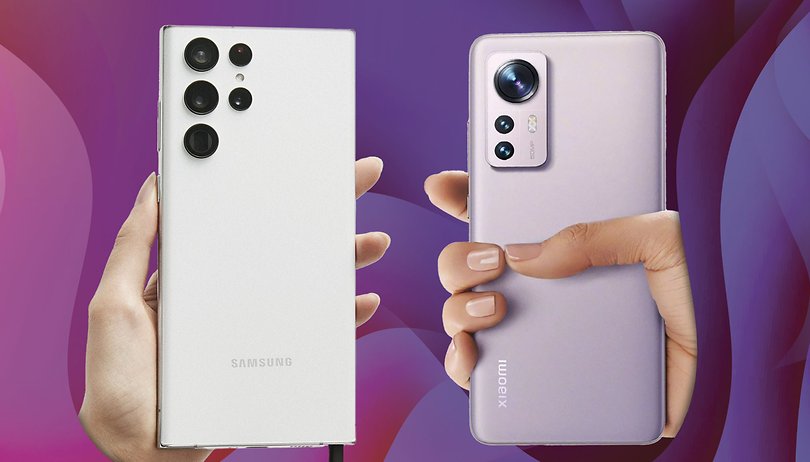
The Samsung Galaxy S22 Ultra is already on sale, with another two models to follow in a few days' time. We also know about Xiaomi's flagship, the Xiaomi 12 Pro, already. The Xiaomi 12 series should also be unveiled for Europe in a few days. Therefore, we let the smartphones from these two mobile giants compete against each other today.
After the Galaxy S22 Ultra, the Galaxy S22+ and the base model Galaxy S22 will finally hit the market this month. Xiaomi already presented its 2022 flagships in December last year. For March 15, we now keep our fingers crossed that the Xiaomi 12 Pro, the Xiaomi 12X and the Xiaomi 12 will be unveiled for the European market.
Many of you will surely wonder which top smartphone you should choose this spring. We want to make the decision easier for you and compare these six models with each other. As always, we begin with our table that contains the most important technical data.
| Samsung: Flagships | Xiaomi: Flagships | |||||
|---|---|---|---|---|---|---|
| Product | ||||||
| Image | 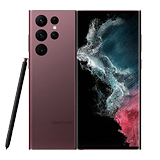 |
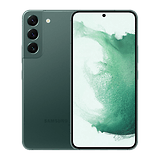 |
 |
 |
 |
 |
| Technical Specifications | 6.8 inch, Dynamic AMOLED 3088x1440 pixels Exynos 2200 (Europe) 128 GB / 256 GB / 512 GB / 1 TB ROM 8 / 12 GB RAM Quad camera Main camera: 108 MP Ultra wide-angle: 12 MP Telephoto camera 1: 10 MP Telephoto camera 2: 10 MP 5,000 mAh, 45 W (15 W wireless) February 2022 |
6.6 inch, Dynamic AMOLED 2400x1080 pixels Exynos 2200 (Europe) 128 / 256 GB ROM 8 GB RAM Triple camera Main camera: 50 MP Ultra wide-angle: 12 MP Telephoto camera: 10 MP 4,500 mAh, 45 W (15 W wireless) February 2022 |
6.1 inch, Dynamic AMOLED 2400x1080 pixels Exynos 2200 (Europe) 128 / 256 GB ROM 8 GB RAM Triple camera Main camera: 50 MP Ultra wide-angle: 12 MP Telephoto camera: 10 MP 3,700 mAh, 25 W (15 W wireless) February 2022 |
6.73 inch, Curved AMOLED 3200x1440 pixels Qualcomm Snapdragon 8 Gen 1 128 / 256 GB ROM 8 / 12 GB RAM Triple camera Main camera: 50 MP Ultra wide-angle: 50 MP Telephoto camera: 50 MP 4,600 mAh, 120 W (50 W wireless) December 2021 |
6.28 inch, Curved AMOLED 2400x1080 pixels Qualcomm Snapdragon 8 Gen 1 128 / 256 GB ROM 8 / 12 GB RAM Triple camera Main camera: 50 MP Ultra wide-angle: 13 MP Macro camera: 5 MP 4,500 mAh, 67 W December 2021 |
6.28 inch, Curved AMOLED 2400x1080 pixels Snapdragon 870 5G 128 / 256 GB ROM 8 / 12 GB RAM Triple camera Main camera: 50 MP Ultra wide-angle: 13 MP Macro camera: 5 MP 4,500 mAh, 67 W December 2021 |
| Pros |
|
|
|
|
|
|
| Cons |
|
|
|
|
|
|
| Ratings |
|
|
|
|
|
|
| Check offer* | Coming soon |
Coming soon |
Coming soon |
|||
Yes, you are right: This comparison might still be a bit lame. After all, we still hope for a Xiaomi 12 Ultra at the very least! That would then be the true flagship model from the Chinese brand and thus, a worthy opponent for the Galaxy S22 Ultra. We also do not yet know whether the Xiaomi 12X will be released globally. For now, however, the six models compared above are the ones that we will focus on and make do with.
Jump to:
- Display and design
- Performance and connectivity
- Cameras
- Software
- Battery and Quick Charging
- Price and Availability
Display and design
Six great smartphones, six times AMOLED, six times the 120 Hertz refresh rate. You can't go far wrong with these specifications. The two top devices, the S22 Ultra and Xiaomi 12 Pro, happen to be the largest in the individual lineups with 6.8 and 6.73-inch screen sizes, respectively. Another common feature is the 1440p resolution, while the other four devices have to make do with a FHD+ resolution.
All smartphones compared here are protected by Gorilla Glass Victus. Xiaomi has the edge in terms of touch sampling rates (480 Hz vs 240 Hz), but Samsung has the edge in display brightness: With a level that cranks all the way up to 1,750 nits, the display's brightness is only just below that of an exploding sun - at least until the next Galaxy S model.
There is a big design difference between the two flagship series: All Samsung models are IP68-certified, whereas Xiaomi makes do without the certification. A look at the backs reveals further additional design differences: Xiaomi relies on protruding islands for the camera system, while Samsung integrates the camera arrays into the casing of the S22 and S22+.
The S22 Ultra is a specially designed chassis apart from its siblings. You can see that in the more angular "Note" design, where the cameras have been fitted into the case. Last but not least, there is also a slot to accommodate the S Pen.
Performance and connectivity
The Snapdragon 8 Gen 1 is Qualcomm's top SoC and hence, it is found among the numerous flagships of 2022. This applies to both the Xiaomi 12 and the 12 Pro, while the Snapdragon 870 chugs along with the Xiaomi 12X. Samsung also relies on the Qualcomm SoC, but not in Europe. Instead, the Exynos 2200 is used in all three models.
Reviews will have to show how powerful the Exynos actually is in the end, but we currently assume that the performance is below that of the Snapdragon 8 Gen 1's benchmarks. However, you do not have to worry about performance problems with any of these six devices.
RAM remains anywhere between 8 and 12 GB for all half dozen devices, which is again a common feature between Xiaomi and Samsung. The same applies to the non-expandable storage, which means you are stuck with either 128 or 256 GB in all six models right out of the box. Only the S22 Ultra offers the option of 512 GB or even 1 TB. Apart from that, none of the devices shows any weakness in terms of connectivity. They all boast 5G network connectivity, offer NFC, Bluetooth 5.2, and Wi-Fi 6 connections.
Cameras
The camera section is usually the one that is written about the most in a detailed review - but it will be the least in this comparison of the specifications. The specifications are at best indications that let us conclude about the camera quality. Thus, we will have to review the cameras first to obtain any reliable information.
But let's take a look at the specifications on paper: The main sensors are (almost) identical in all three Xiaomis. You get 50 megapixels with f/1.9 aperture and OIS there. The difference? The Pro uses Sony's IMX707, while the other two use the more familiar Sony IMX766. The ultra-wide-angle camera and the telephoto camera in the Pro model also offer 50 MP. On the other hand, it drops on the Xiaomi 12 and 12X: There is a combination of 13 MP ultra-wide and 5 MP macro shooters installed there.
Samsung takes a slightly different approach: All three models now come with a real telephoto lens. The S22 and S22+ share the camera system. The triple cam also consists of a 50 MP shooter, in this case with an f/1.8 aperture. In addition, there is an ultra-wide-angle sensor with 12 megapixels and the aforementioned 10 MP telephoto lens with 3x zoom. The latter is optically image-stabilized like the main camera.
The Ultra offers four sensors, with the array led by a 108 MP camera. It continues with 12 MP at the ultra-wide-angle and two telephoto lenses, each at 10 MP. There is the identical 3x zoom as on the other two S22 models, but with the addition of 10x optical zoom in the second telephoto camera.
Software
There is actually still a bit of excitement in this category. Samsung relies on Android 12, on which its own OneUI is based. Xiaomi equips the 12-line with the MIUI 13 skin. It was initially disappointing that it was based on Android 11. However, Xiaomi has been rolling out MIUI 13 based on Android 12 for the past few days now. Therefore, it is possible that MIUI 13 will be paired with Android 12 when the Xiaomi 12 models are revealed.
- While we are on the topic of MIUI, be sure to read Zois' commentary on the dark mode dilemma on Xiaomi smartphones
Samsung still has a very fat software ace up its sleeve with its update policy. Namely, important models like the Galaxy S22 series will receive four major Android updates and five years of support for security patches. Samsung thus outstrips Xiaomi by one year each.
Also, another area where Samsung scores, albeit a software and hardware point in equal measure: The S Pen! The stylus pen from the South Koreans increases the user-friendliness of the S22 Ultra and also enables software features that you will not find on the Xiaomi devices.
Battery and quick charging
This is the category where Xiaomi normally trumps the South Koreans. The Xiaomi 12 Pro comes with a 4,600 mAh battery, which is the only one in the Xiaomi 12 range that can also be charged wirelessly. However, this is done at a whopping 50 watts! Thus, the device completely outperforms the Samsungs, because even the Galaxy S22+ and S22 Ultra manage "only" 45 watts with a cable. With a cable, the Xiaomi 12 Pro charges at an even faster rate of 120 watts!
The Xiaomi 12 and 12X also leave Samsung's competition behind in the dust with 67 watts, whereas the base model Galaxy S22 lags behind with only 25 watts. While the other five models in this comparison have settled at a battery capacity of between 4,500 and 5,000 mAh, the S22 is behind here as well at only 3,700 mAh.
Nevertheless, I would like to point out that we compare smartphones based on technical specifications. Thus, we still have to subject all devices to detailed reviews. At best, it might turn out that a smaller battery does not have too much of a negative impact due to increased energy efficiency.
By the way, Xiaomi can still collect a special point in this department: The chargers are all included in the box for all three models. The Samsung chargers, on the other hand, will have to be purchased separately.
Price and availability
The Xiaomi 12 series was introduced in China in December, and we are now waiting for the global launch event on March 15. There, we will find out just how soon we can get our hands on the devices and also the exact prices. So far, only assumed prices have been leaked, which are higher than hoped for.
If these prices are correct, we will have to pay €899 for the Xiaomi 12 and €1,099 for the Xiaomi 12 Pro. This would make the smartphones even more expensive than the Samsung competition. Samsung's prices are shown in the following table and you can see that they are cheaper after conversion to US$:
| Galaxy S22 | Galaxy S22+ | Galaxy S22 Ultra | |
|---|---|---|---|
| Price |
|
|
|
| Availability | The S22 Ultra is already in stores, while the Galaxy S22 and S22+ will follow in March 2022. | ||
If the handsets have not been released officially where you stay, we still want to list them in this overview. Xiaomi's models have already been revealed in China but not outside of its home market. Samsung presented the new Galaxy S22 series on February 9, 2022, and here we already know how much the smartphones will cost when they hit the market. As usual, we don't expect Xiaomi to officially sell the 12th generation phones in the US.
In February 2022, there are three models in both series. For Xiaomi, they are the Xiaomi Xiaomi 12, Xiaomi 12 X, and Xiaomi 12 Pro variants, and for Samsung, they are the Galaxy S22, Galaxy S22+, and Galaxy S22 Ultra. As you know from last year, the variants cannot be compared fairly just yet. Xiaomi might still launch a 12 Ultra, which will then be the direct opponent for the Galaxy S22 Ultra.
Conclusion
Both Samsung and Xiaomi have provided us with three interesting smartphones each, but we always have to bear in mind that the most powerful Xiaomi device is still to come with the Xiaomi 12 Ultra. If the high prices from Xiaomi are confirmed, the Chinese have already lost a big advantage that they always had in the past. However, we still have to leave a question mark in this department.
We can expect the Chinese smartphones to be a nose ahead in terms of performance, but that should not play a big role in practical use. In contrast, the South Koreans will probably be more convincing in terms of the all-good displays, but we are also talking about a generally high level of quality for all AMOLED panels.
Samsung offers you longer software support to boot. However, it is more a question of personal taste where you feel most at home with the skins. Stylus fans will be left out in the cold with Xiaomi, while the Note series lives on in the Galaxy S22 Ultra. However, Xiaomi can also score points in terms of battery life: With their batteries that can be charged faster in all three models than the equivalent handsets from Samsung.
So, if you had to choose a device based on specifications alone (which you should not do, wait for the reviews!), it would be small things that could be the deciding factor. Maybe the IP certification of the Samsung devices, or the design of the Xiaomi models.
As soon as all devices are out, we will be able to get a final impression. Until then, you can tell us which of the six smartphones is your favorite in the comments.


















